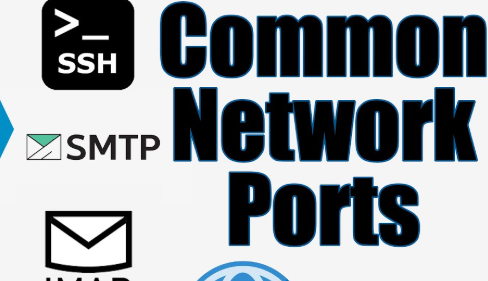
Here’s a list of some of the most common network ports and their uses:
Well-Known Ports (0-1023)
- Port 20/21 (FTP – File Transfer Protocol)
- Port 21: Control (commands)
- Port 20: Data transfer
- Port 22 (SSH – Secure Shell)
- Used for secure remote login and command execution.
- Port 23 (Telnet)
- Unencrypted remote login. Rarely used due to security concerns.
- Port 25 (SMTP – Simple Mail Transfer Protocol)
- Used for sending emails.
- Port 53 (DNS – Domain Name System)
- Resolves domain names to IP addresses.
- Port 67/68 (DHCP – Dynamic Host Configuration Protocol)
- Port 67: Server
- Port 68: Client
- Port 80 (HTTP – Hypertext Transfer Protocol)
- Used for web traffic over the internet.
- Port 110 (POP3 – Post Office Protocol)
- Retrieves emails from a mail server.
- Port 143 (IMAP – Internet Message Access Protocol)
- Used for retrieving and managing email messages.
- Port 443 (HTTPS – Secure HTTP)
- Secure web traffic using SSL/TLS.
- Port 161/162 (SNMP – Simple Network Management Protocol)
- Port 161: Queries
- Port 162: Traps/Notifications
Registered Ports (1024-49151)
- Port 3306 (MySQL)
- Default port for MySQL database servers.
- Port 3389 (RDP – Remote Desktop Protocol)
- Used for remote desktop access in Windows.
- Port 1433 (Microsoft SQL Server)
- Default port for Microsoft SQL database servers.
- Port 5900+ (VNC – Virtual Network Computing)
- Default is 5900; other ports vary per display number.
- Port 8080 (Alternative HTTP)
- Often used for proxy and web servers.
Dynamic/Private Ports (49152–65535)
- Ephemeral Ports
- Temporary ports assigned for client-server communication. These vary dynamically.
Additional Notable Ports
- Port 135 (Microsoft RPC)
- Used for Remote Procedure Call services.
- Port 445 (SMB – Server Message Block)
- Used for file sharing and Windows network communication.
- Port 123 (NTP – Network Time Protocol)
- Synchronizes time between devices.
Comments are closed